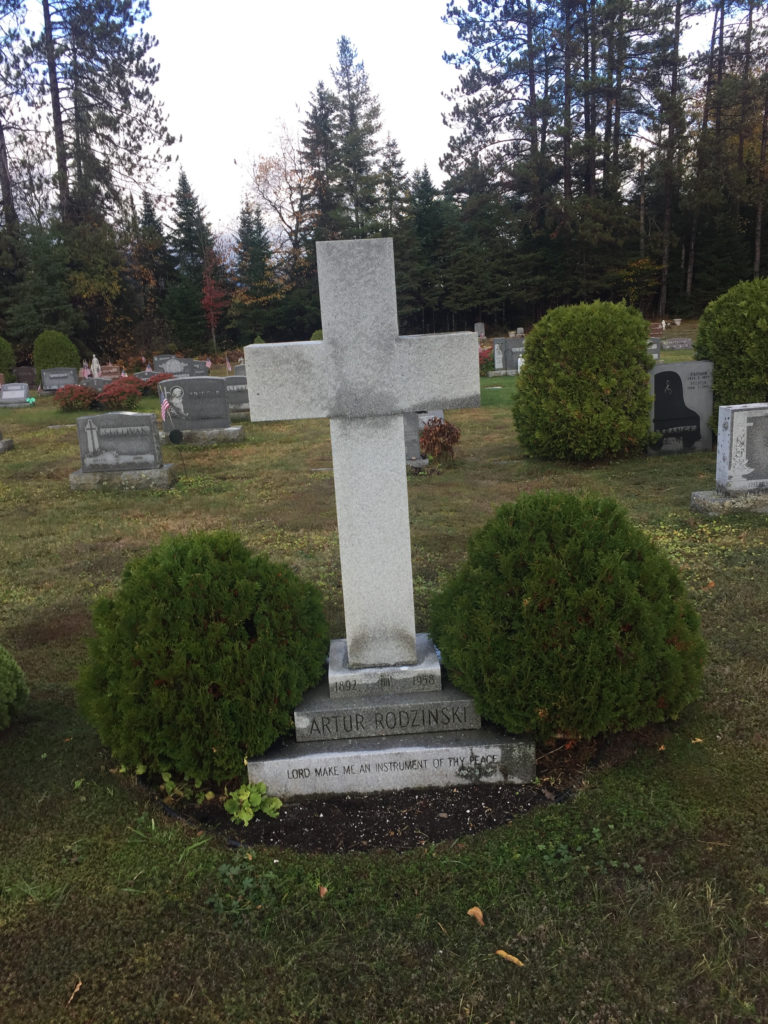Erik Visits an American Grave, Part 772
This is the grave of Artur Rodzinski.

Born in 1892 in Split, in what is today Croatia, Rodzinski grew up in the elite of the late Austro-Hungarian Empire. His father was a general in the army. He grew up in Poland, which was his father’s ethnic background in that multiethnic empire. Lviv was then a Polish city, but is today part of Ukraine. He studied law in Vienna but also enrolled at the Academy of Music and decided on a career in music instead.
Rodzinski soon became one of the leading conductors in what was now an independent Poland after 1918. But he didn’t stay there long. The conductor Leopold Stokowski saw him conduct the Warsaw Philharmonic in 1920 and was highly impressed and brought him back with him to Philadelphia to be his assistant with the Philadelphia Orchestra. Rodzinski soon rose in the classical music world of his new home. He worked with Stokowski for several years before getting named the music director for the Los Angeles Philharmonic in 1929, staying there for four years before being named music director for the Cleveland Orchestra. At this time, Cleveland was considered the superior cultural center to Los Angeles. He brought opera into the orchestra’s repertoire for the first time. He also was a pioneer in bringing modern music to the U.S., including conducting the first performance of Shostakovich’s Lady MacBeth of Mtsensk in 1935, shortly after the great conductor was denounced by the Stalinist state.
Rodzinski went on to conduct the Cleveland Orchestra on many pioneering recordings for Columbia Records in the late 1930s. In 1943, he left Cleveland for the New York Philharmonic. He was a bit of a tyrant but had the musical skill to back it up. But his four years at the Philharmonic were pretty tense and he resigned after some spat in 1947, an event that actually placed him on the cover of Time. I’m not sure I could even name a contemporary conductor today other than people who do movie soundtracks, not to mention expect to see one on the cover of the nation’s premier news magazine. He then went to the Chicago Symphony but was such a tyrant there that he only lasted a year.
After Rodzinski flamed out in Chicago, he back to Europe in 1948, mostly working in Italy, including leading several major and pioneering works, such as the first performance of Prokofiev’s single evening version of War and Peace, in 1953. But his health was declining. His doctors warned him to stop conducting, but he would not. He returned to Chicago in 1958 to conduct some performances. They went well, but his heart was giving out and they were his last major public performances. He died later that year in Boston at the age of 66.
Let’s hear Rodzinski work.
Artur Rodzinski is buried in Saint Agnes Cemetery, Lake Placid, New York.
This grave visit was sponsored by LGM reader contributions. Many thanks! If you would like this series to visit other conductors, you can donate to cover the required expenses here. Morton Gould is in West Babylon, New York and Marvin Hamlisch is in Queens. Previous posts in this series are archived here.


